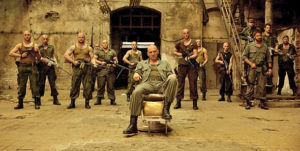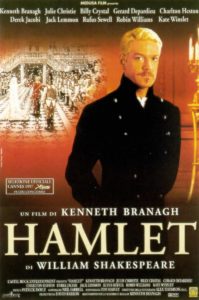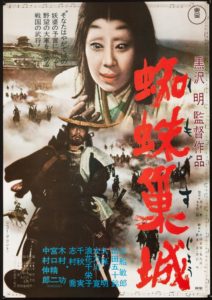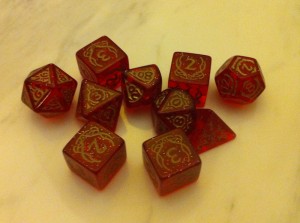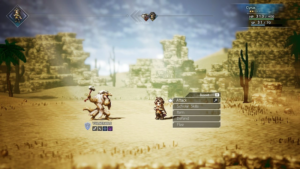
In preparation for running a Symbaroum game, here is an overview of the system, particularly the player-facing side.
First, an oversimplified summary in D&D terms:
- HP = strength score (sort of, with little to no improvement over time)
- Attack rolls are dexterity checks
- Ability checks are roll-under (1d20 <=)
- There are no classes or levels
- Archetypes (and associated occupations) provide recommended packages of starting abilities (which are sort of like feats)
- Spend XP to learn or improve abilities
- Using magic causes corruption (basically: spiritual damage with varying degrees of transience)
- Another ability score determines how much corruption a character can absorb before bad things start to happen (basically: spiritual HP)
There you go, if you have familiarity with some version D&D you should now have a working grasp of Symbaroum basics. Read on for more detailed comparison.
The system is mostly what I have called “monological” in the past. For example, players roll to defend rather than opponents rolling to attack.
Symbaroum formal game terms below are in bold. Though I have a few planned house rules, to improve the general usefulness of this post, all of the following info applies to the official rules as written, to my knowledge. I make no claim to completeness—for example, I have ommitted mention of races—but these are the most central rules in my opinion.
Symbaroum Correspondences
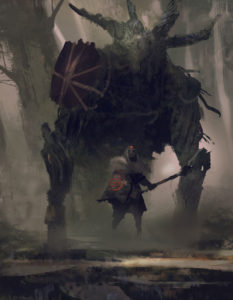
- Ability Scores (⇒ Attributes)
- Accurate, Cunning, Discreet, Persuasive, Quick, Resolute, Strong, Vigilant
- Generation: 2d6+3 per attribute, in order or arranged to taste (yields scores in the range [5-15])
- Test: roll 1d20 <= score value (often adjusted by an opposed Attribute)
- Test outcomes are generally binary (success or failure)
- Adjustments are penalties or bonuses applied to the player character Attribute score rather than to the roll; for example, if a player character has a score of 12, a -3 penalty means that the player must roll less than or equal to 9 for success
- Common oppositions:
- Accurate versus Quick
- Persuasive versus Resolute
- Discreet versus Vigilant
- Strong versus Strong
- Common oppositions:
- (The default attribute generation method is assigning values from a default set or point-buy, the numbers for which result in similar expected values)
- Default set: [15, 13, 11, 10, 10, 9, 7, 5]
- (M = 10, SD = 2.96)
- Default set: [15, 13, 11, 10, 10, 9, 7, 5]
- AC/Armor Class (⇒ Defense)
- Symbaroum uses Defense tests (performed by players) rather than opponent attack rolls
- Defense test: 1d20 less than or equal to Quick
- Modifiers: Armor (Impeding penalty), shield (+1 bonus)
- Armor
- Three levels of armor: light 1d4, medium 1d6, and heavy 1d8
- Impeding penalty to Defense tests: light -2, medium -3, heavy -4
- Roll the armor die to decrease incoming damage from physical attacks (opponent damage values are static, so rolling for armor replaces what in D&D would be the referee rolling monster damage)
- Attack Roll
- Attribute test: Accurate, adjusted by opponent’s Quick
- Then you roll damage, based on weapon, just like D&D—see the weapons entry below—but for referee-controlled combatants armor is static damage reduction (no armor die)
- Some Abilities allow the use of other stats in place of Accurate for attack rolls (this is one of the few bits of system mastery you probably need to maintain combat effectiveness, if you care)
- Classes (as in Fighter, Cleric, Thief, etc.)
- Rather than classes, Symbaroum provides a starting Archetype (representing the classic three of Mystic, Rogue, and Warrior), each of which is further specified by Occupations (such as Duelist, Theurg, Ranger, and so forth)
- Initial Archetype & Occupation provide recommended packages of starting Abilities
- Player characters start with one of the following two options:
- Two Abilities at Novice level and one Ability at Adept level
- Five Abilities at Novice level
- Combat turn
- On each turn, a player character may perform one of the following:
- 1 Combat Action + 1 Movement Action
- 2 Movement Actions
- On each turn, a player character may perform one of the following:
- Dying (★ will be house ruled ★)
- Zero Toughness → unconscious & dying
- Each turn: Death Test, three failures → dead
- Death Test: 1d20
- 1 = recover with 1d4 Toughness
- 2-10 = success (no change)
- 11-19 = failure
- 20 = immediate death
- HP (⇒ Toughness)
- Toughness = Max(10, Strong Attribute)
- (So the HP equivalent is basically just the same as an ability score, but with a minimum of 10)
- Toughness almost never increases—there are a handful of Abilities which will increase toughness slightly—so Symbaroum has a much flatter power curve in this regard compared to all versions of D&D
- Initiative
- Combatants act in order of Quick scores (highest first)
- Levels & Advancement (★ will be house ruled ★)
- There are no levels; player characters spend XP to learn or improve Abilities
- Each ability has three tiers: Novice, Adept, and Master
- Learning and improving Abilities:
- Novice level (new Ability): cost = 10 XP
- Novice → Adept: cost = 20 XP
- Adept → Master: cost = 30 XP
- (So the full cost of learning a new Ability and improving it all the way to Master is 60 XP.)
- Magic Items (⇒ Artifacts, p. 186; ★ will be house ruled very slightly ★)
- Using an Artifact first requires Bonding, which imposes permanent Corruption (generally one point)
- Activating an Artifact’s power imposes some temporary Corruption (generally 1d4 points)
- (See Corruption Threshold below)
- Shields
- +1 to Defense tests
- Spells (⇒ Mystical Powers, p. 119, p. 176)
- Mystical Powers work much like Abilities—with Novice, Adept, and Master levels—but learning a Mystical Power outside of a tradition (also handled at the rules level as an Ability) imposes one permanent point of Corruption
- Casting a spell (using a Mystical Power) causes 1d4 temporary Corruption
- Advancing in the ranks of a mystical tradition can mitigate this cost (Corruption is the mechanical system resource that replaces spell slots or magic points)
- See Corruption Threshold below
- Weapons
- Weapon damage works similarly to D&D
- Damage: Heavy 1d10, Long 1d8, Single-Handed 1d8, Short 1d6
- Projectile: crossbow 1d10, bow 1d8, sling 1d6
- Long weapons provide an initial free attack versus opponents armed with shorter weapons
- (There are a few other properties of specific weapons which work relatively intuitively)
- XP (★ will be house ruled ★)
- The text about XP is more guidelines than rules, but the expectation seems to be that surviving a scene involving challenge is worth 1 XP for each player character
Rules Without Direct D&D Analogues
Symbaroum also has a handful of rules which lack direct analogues in D&D:
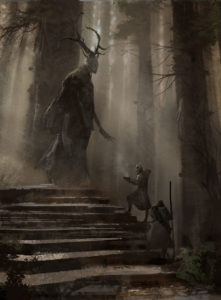
- Pain Threshold
- Derived stat: Strong / 2, round up
- Combatants that suffer damage equal to or greater than Pain Threshold in a single hit experience some additional deleterious effects
- Corruption Threshold
- Derived stat: Resolute / 2, round up
- Capacity to tolerate Corruption is the primary player character resource that constrains use of magic
- When total Corruption—permanent + temporary—equals or exceeds the Resolute score, the character turns into an abomination (worse than character death, because this essentially creates a new hostile monster)
- Temporary Corruption dissipates at the end of each scene
- (★ may be house ruled ★)
- Tolerating Corruption also constrains the use of Artifacts as doing so requires Bonding with the Artifact, which imposes some permanent Corruption (generally one point)
There is also a free quick-start rules document. Post images are from the official site.

